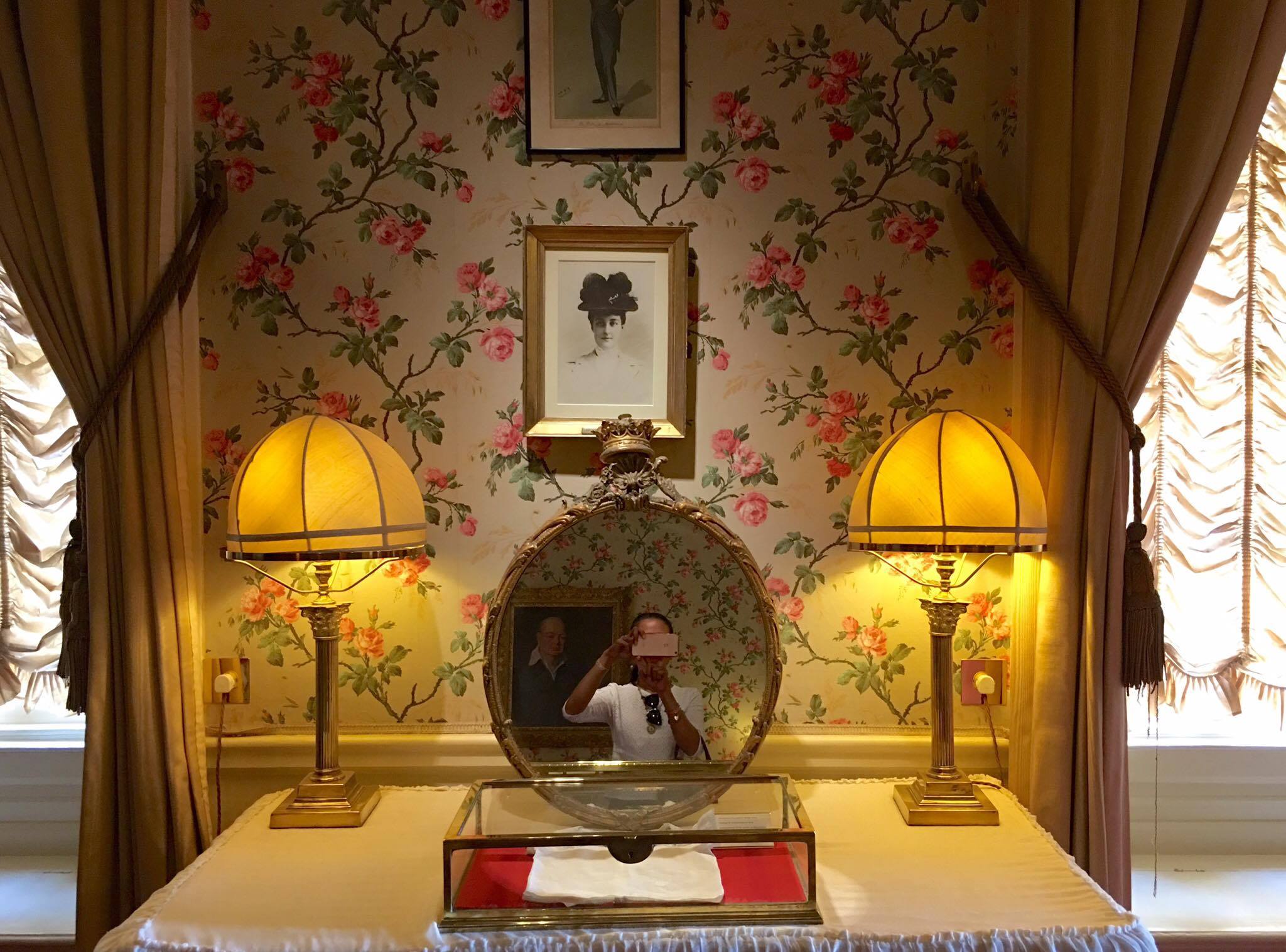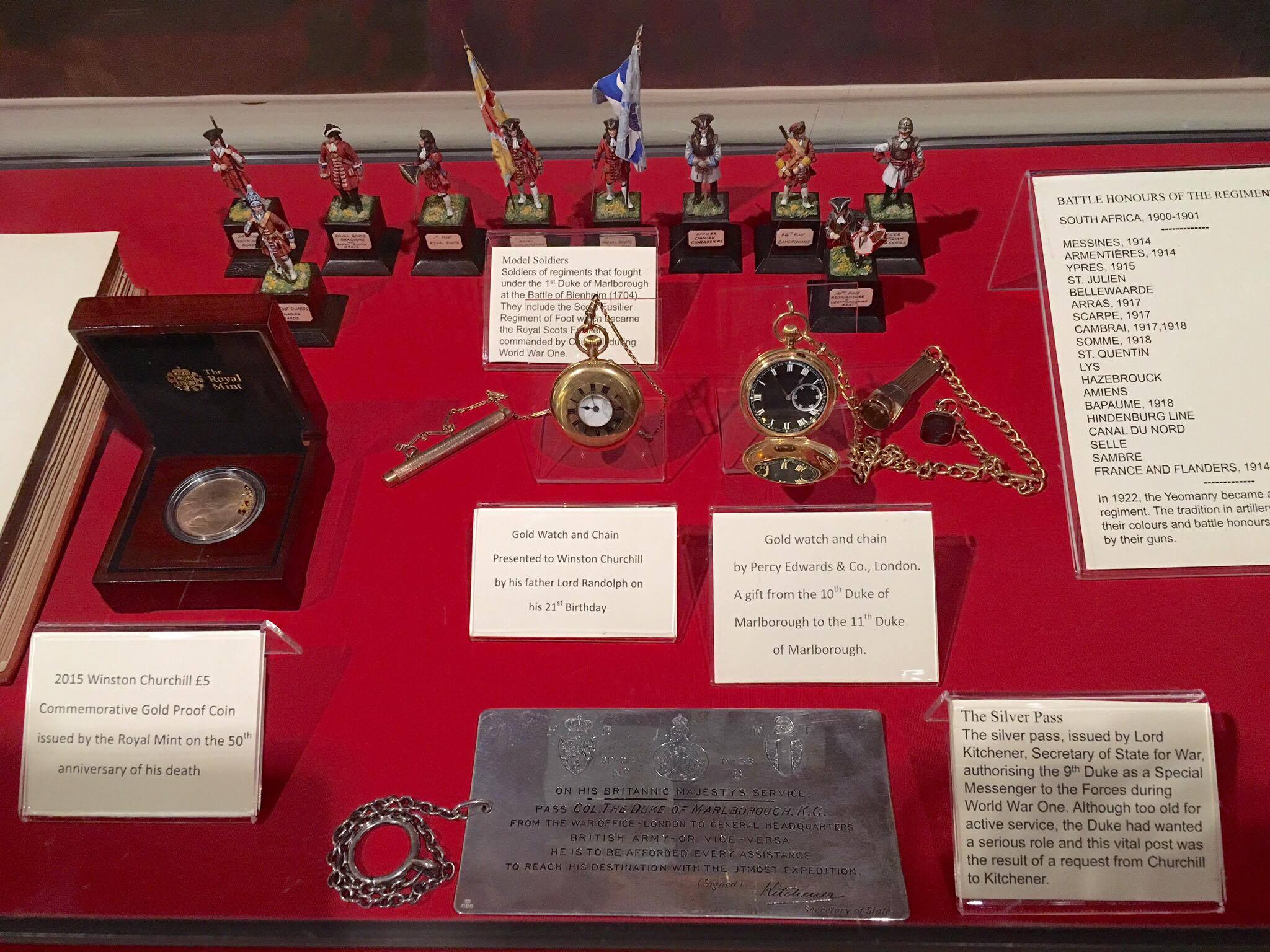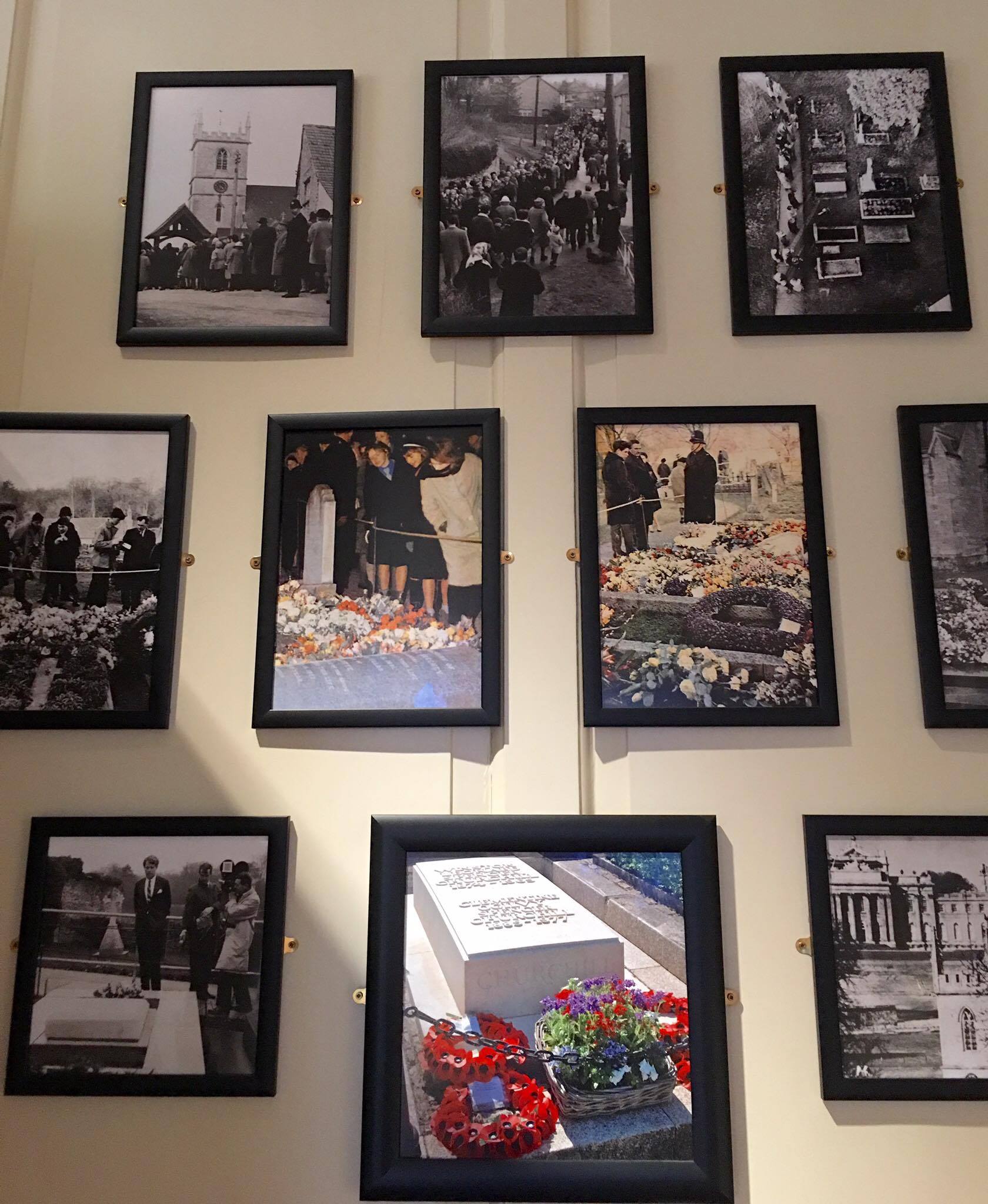Winston Churchill Exhibition and Memorial Garden at Blenheim Palace
Britain’s war-time Prime Minister Winston Churchill was born at Blenheim Palace, his family ancestral home, on the 30th of November 1874. Churchill Exhibition is a dedicated exhibition to give visitors a real sense of the great war-time leader and most famous member of the Churchill family. It was opened in 2015 to mark the 50th anniversary of Sir Winston Churchill’s death.

Located in a small room to the right of the Great Hall is the famous room that Winston Churchill was born in 1874. Churchill’s mother, Lady Randolph, was taken by surprise when she gave birth to her son prematurely several weeks before he was expected. It is fitting that Churchill was born at the Palace, since later in life he had a strong sense of family and came to greatly admire the 1st Duke of Marlborough. Many years later, he proposed to his future wife, Clementine Ogilvy, at the Temple to Diana located beside the lake on the estate. Churchill is also buried nearby Bladon; there is a direct line of axis from Blenheim Palace past the Column of Victory located on the estate to the cemetery in Bladon thereby symbolically linking both his birth and his death.
We also visited the 1874 furnished room where Winston was born. Adjoining rooms exhibit items regarding his shy childhood, visits with his cousin the 10th Duke and his work in the Palace’s MI5 wartime offices.

Being the birthplace of the war-time Prime Minister, this place is of national importance.
 Churchill’s Birthroom is on the palace’s main floor. His first robe is on display on a glass cabinet.
Churchill’s Birthroom is on the palace’s main floor. His first robe is on display on a glass cabinet.
 Interestingly enough, his mother wasn’t expecting an early birth (she fell from a horse), and she didn’t have any clothes ready for his arrival. They had to borrow baby clothes from the infant of one of the servants at Blenheim.
Interestingly enough, his mother wasn’t expecting an early birth (she fell from a horse), and she didn’t have any clothes ready for his arrival. They had to borrow baby clothes from the infant of one of the servants at Blenheim.

The four walls of the room are decorated with loads of memorabilia from the time he was born until his death.






Sir Winston Churchill Memorial Garden
A walk in Churchill’s Footsteps on the new indoor and outdoor trail journeying through the life and achievements of Churchill is a poignant reminder of the lost era. This trail showcases some of the key moments in his life, from the room in which he was born inside the Palace, through the grounds he explored as a child and the spot in which he proposed, to his place of rest in St Martin’s church yard in the neighbouring village of Bladon. Finish the day in the reinvigorated Churchill Exhibition with never-been –seen –before artefacts and references to life events including the proposal to his wife Clementine. Outside, two sphinxes flank the symmetrical Water Terraces. These interestingly sport sculpted heads of the 9th Duke’s second wife Gladys. A pathway takes us past the ‘Temple of Diana’ where Winston proposed in 1908 to his darling Clementine. Stopping at the beautiful lakeside Rose Garden, we consider how today’s Blenheim Palace honors two distinguished Churchills and their beloved wives.
 The Temple of Diana where Churchill proposed to his wife Clementine.
The Temple of Diana where Churchill proposed to his wife Clementine.
A rare bust of Churchill by Oscar Nemon, one of only three from the same mould, is positioned on a stone plinth along the path, overlooking the Great Lake. The garden is next to the Temple of Diana, where Churchill proposed to his wife Clementine, and its seating area has views across the Capability Brown lake. The garden has a 90-metre (295ft) granite path, representing each of the wartime prime minister’s 90 years, winding through a flowerbed of Flanders poppies, snowdrops and cornflowers. Alongside are Magnolia kobus, Magnolia merrill, English oak and lilac (Syringa vulgaris). Milestones are incorporated into the path, allowing visitors to walk the timeline of Churchill’s incredible life. The plants were chosen by the 11th Duke of Marlborough, John Spencer-Churchill, who died in 2014 aged 88 and was both a cousin and godson of Churchill.

Blenheim’s parkland was landscaped by Lancelot ‘Capability’ Brown and to celebrate the 300th anniversary of his birth, 2016 they had an exhibition showcasing his life and work at Blenheim Palace during the 11 years that he spent creating one of his largest projects. We walked through all of Brown’s most celebrated creation and it’s an amazing garden.
One thought
Comments are closed.